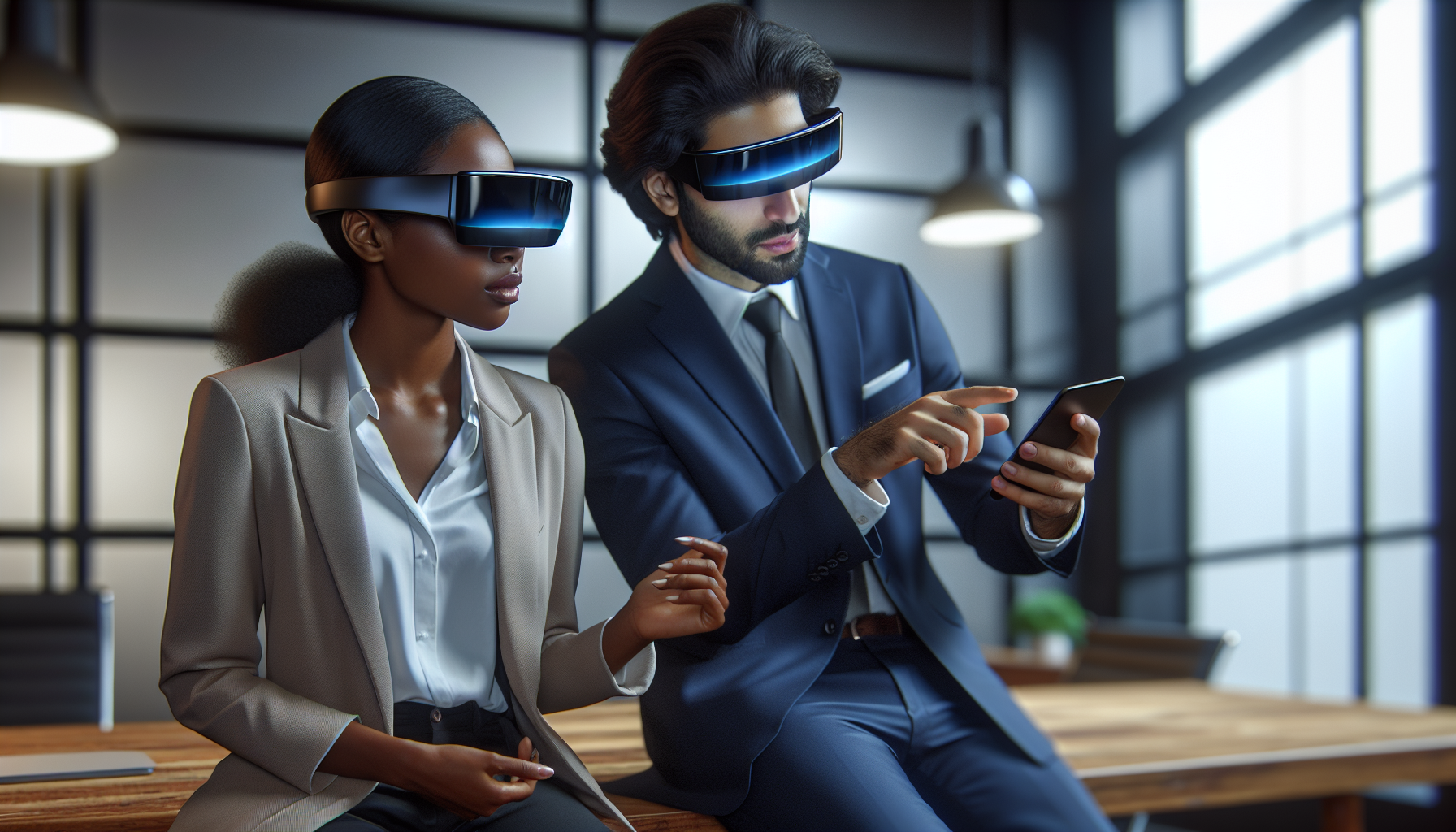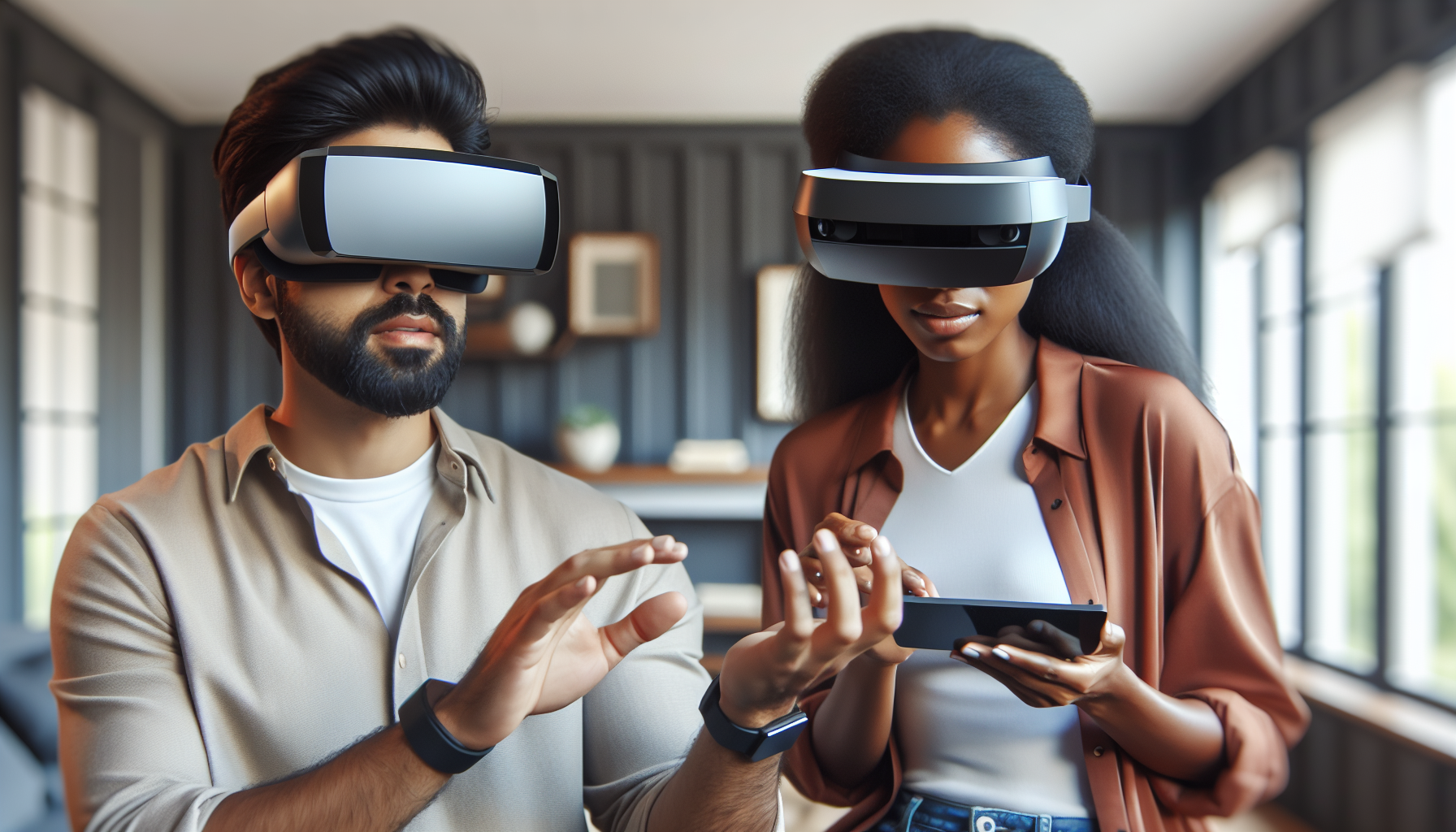Table of Contents
Understanding AI-driven Personalization in AR Advertising

Key Points
- AI-driven personalization allows for highly targeted advertising, enhancing user engagement and conversion rates.
- AR ads offer immersive experiences that can significantly increase the effectiveness of campaigns by engaging users more interactively.
- Integration of AI with AR in advertising helps gather real-time data and insights, which can be used to refine and personalize advertising efforts further.
- Personalization in AR ads can lead to higher customer satisfaction as ads are more relevant to the individual’s preferences and behaviors.
- The combination of AI and AR in advertising is set to transform the ad industry by offering new ways to connect with and captivate audiences.
Technological Foundations
The integration of AI and Augmented Reality (AR) in advertising leverages complex algorithms and computer vision. AI algorithms analyze user data and behavior to deliver personalized content, while AR provides a layer of digital enhancement that interacts with the real world, making ads more engaging and interactive.
AI systems in AR advertising are capable of processing vast amounts of data from various sources, including social media, browsing habits, and purchase history. This data is then used to create detailed user profiles, which help craft personalized ad experiences displayed through AR interfaces.
AR technology, on the other hand, uses devices like smartphones, tablets, or AR glasses to overlay digital information onto the physical world. When combined with AI-driven insights, AR can display ads that are not only contextually relevant but also adapted to the user’s current environment, enhancing the overall impact and recall of the ad.
Together, AI and AR transform traditional advertising paradigms by making them more dynamic and responsive to user engagement. This leads to higher conversion rates and improved ROI for marketers.
Current Applications and Examples
One of the standout applications of AI-driven personalization in AR advertising is in the retail sector. For instance, a furniture store might use AR ads to allow customers to visualize how a piece of furniture would look in their own home, with AI suggesting products based on past behavior and preferences.
In the automotive industry, AR ads can let potential buyers explore different car models and features interactively. AI personalizes the experience by highlighting features that align with the user’s past interests or needs.
Beauty brands are also adopting this technology to offer virtual try-ons through AR, where AI assists in recommending products based on skin tone analysis or previous purchases, providing a highly personalized shopping experience that drives sales.
These applications not only illustrate the effectiveness of combining AI with AR in advertising but also highlight the potential for this technology to be applied across various industries to enhance customer interaction and satisfaction.
The Challenge of Achieving Deep Personalization in AR Advertising

Complexity in User Data Integration
One significant challenge in achieving deep personalization in AR advertising is the complexity of integrating and interpreting vast amounts of user data. For AR ads to be truly personalized, they must be based on a comprehensive understanding of each user’s preferences, behaviors, and context.
However, collecting this data involves navigating privacy concerns and ethical considerations, ensuring that user data is not only gathered with consent but also managed and stored securely to prevent breaches.
Moreover, the data collected from various sources must be seamlessly integrated and analyzed in real time to deliver personalized AR experiences. This requires sophisticated AI algorithms capable of handling big data, making sense of it, and applying it in a way that is both meaningful and timely for the user.
Addressing these challenges is crucial for marketers looking to leverage AI-driven personalization in AR advertising effectively, as it directly impacts the relevance and effectiveness of the ads delivered.
Steps to Implement AI-driven Personalization in AR Ads

Step 1: Data Collection and Analysis
The first step in implementing AI-driven personalization in AR advertising is to collect and analyze user data. This involves setting up data collection mechanisms across various touchpoints where users interact with the brand, such as websites, apps, and social media platforms.
Data analysis tools powered by AI can then be used to sift through this data, identifying patterns and insights that can inform personalized advertising strategies. This might include preferences for certain products, typical browsing times, or responsiveness to previous ad campaigns.
Step 2: Creating Personalized AR Content
Using the insights gained from data analysis, marketers can then create personalized AR content tailored to individual user profiles. This could involve customizing the visual elements of AR ads, such as colors and designs, or the way information is presented, depending on the user’s past interactions and preferences.
For instance, an AR ad for a new sneaker might show different color options to different users based on their previous purchases or browsing behavior noted in the data analysis phase.
Step 3: Real-time Adaptation and Interaction
The final step is to ensure that the AR ads are not only personalized but also capable of adapting in real time based on user interactions. This requires a robust AI system capable of processing real-time data inputs from the AR interface, such as how long a user looks at a particular product or which features they interact with most.
The AI system can then adjust the content dynamically, enhancing the personalization of the experience. For example, if a user spends a lot of time looking at the specs of a high-tech gadget in an AR ad, the AI could offer a special discount or show additional features to encourage a purchase.
Frequently Asked Questions

How does AI enhance AR advertising?
AI enhances AR advertising by analyzing user data to deliver highly personalized and contextually relevant ad content within AR environments. This leads to more engaging and effective advertising experiences.
What are the benefits of AI-driven personalization in AR ads?
The benefits include increased engagement, higher conversion rates, and improved customer satisfaction, as ads are more relevant and tailored to individual user needs and preferences.
Are there privacy concerns with AI-driven AR advertising?
Yes, collecting and analyzing user data for personalized advertising raises privacy concerns. Companies must handle this data responsibly, ensuring transparency and securing user consent.
Can small businesses implement AI-driven AR advertising?
Yes, with the increasing availability of AR and AI tools, small businesses can also implement personalized AR advertising strategies, though they may need to start on a smaller scale.
Looking Ahead: The Future of AI in AR Advertising

As we look to the future, the integration of AI in AR advertising is poised to become more sophisticated, with advancements leading to even more personalized and immersive ad experiences. Here are five predictions for the future of this technology:
- Increased Adoption Across Industries: More sectors will adopt AI-driven AR advertising as they witness its effectiveness in enhancing user engagement and sales.
- Advancements in AI Algorithms: AI algorithms will become more advanced, allowing for even deeper personalization and real-time interaction within AR ads.
- Greater Focus on Privacy and Ethics: As the technology evolves, there will be a greater focus on addressing privacy concerns and ensuring the ethical use of AI and user data in AR advertising.
- Integration with Other Technologies: AI-driven AR advertising will increasingly integrate with other technologies, such as IoT and 5G, leading to more seamless and interactive user experiences.
- Enhanced User Control and Customization: Users will have more control over their AR ad experiences, including options to customize the types of ads they see and how they interact with them.
References
- McKinsey & Company on the future of personalization: A comprehensive look at how personalization is shaping marketing strategies.
- AdCreative.ai on the future of advertising: Insights into how generative AI is transforming the advertising landscape.
- Revieve: An example of AI and AR integration in the beauty industry for personalized customer experiences.
Disclaimer
This article is AI-generated for educational purposes and does not intend to give advice or recommend its implementation. It aims to inspire readers to research and delve deeper into the topics covered.
- From SaaS to AI Agents - 05/27/25
- The AI Automation Engineer - 05/13/25
- Hire One Developer to Press One Key - 05/06/25